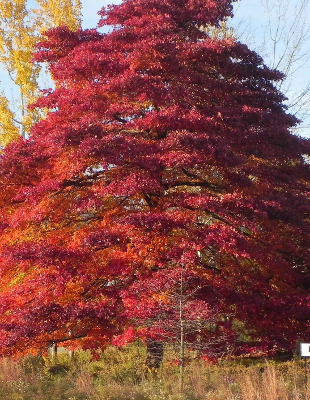Black Tupelo (Nyssa sylvatica)
Category: Deciduous Trees

Black tupelo also known as black gum or Nyssa sylvatica is a deciduous medium sized tree. This tree is native to the eastern part of North America, southern Ontario and Mexico.
Black tupelo grown 20-25 meters tall and has a trunk diameter of 50-10cm. The bark of this tupelo is dark gray and flaky when it is young, but when it ages it resembles alligator. The twigs are reddish brown in color. The trunk has straight branches which extend outward at the right angels.
Black tupelo’s leaves vary in size and shape. The leaves can either be oval or elliptical at around 12cm long. The upper surfaces are lustrous.
Deer likes eating the seedling and leaves of this tree. This makes the establishment of this tree very hard.
Flowers produced by this tree are usually small and bees attack them for nectar. They are dioecious meaning that both male and female proximity is required of seed production. But there are others that are polygamo-dioecious meaning the male and female flowers are on the same tree.
The fruits that are produced are black-blue which are about 10mm long. It has a bitter-to-sour taste, thin and oily. One stalk can produce one to three fruits and these fruits are normally eaten by birds. A good example of such a bird is American Robin.
Black tupelo is deep tap rooted. This makes transplanting very difficult even when young. This explains why the tree is very uncommon. It is commonly grown in Southern coastal plains to altitudes of about 900m. The best soils for this tree should be well drained and light textured if grown on the low ridges of second bottoms. But when grown on uplands, loams and clay loams are idea.
The tree is used for ornamental purposes and in parks it is used as a shade tree. It is also a source of honey in the wild.

 Back To Category Deciduous Trees
Back To Category Deciduous Trees